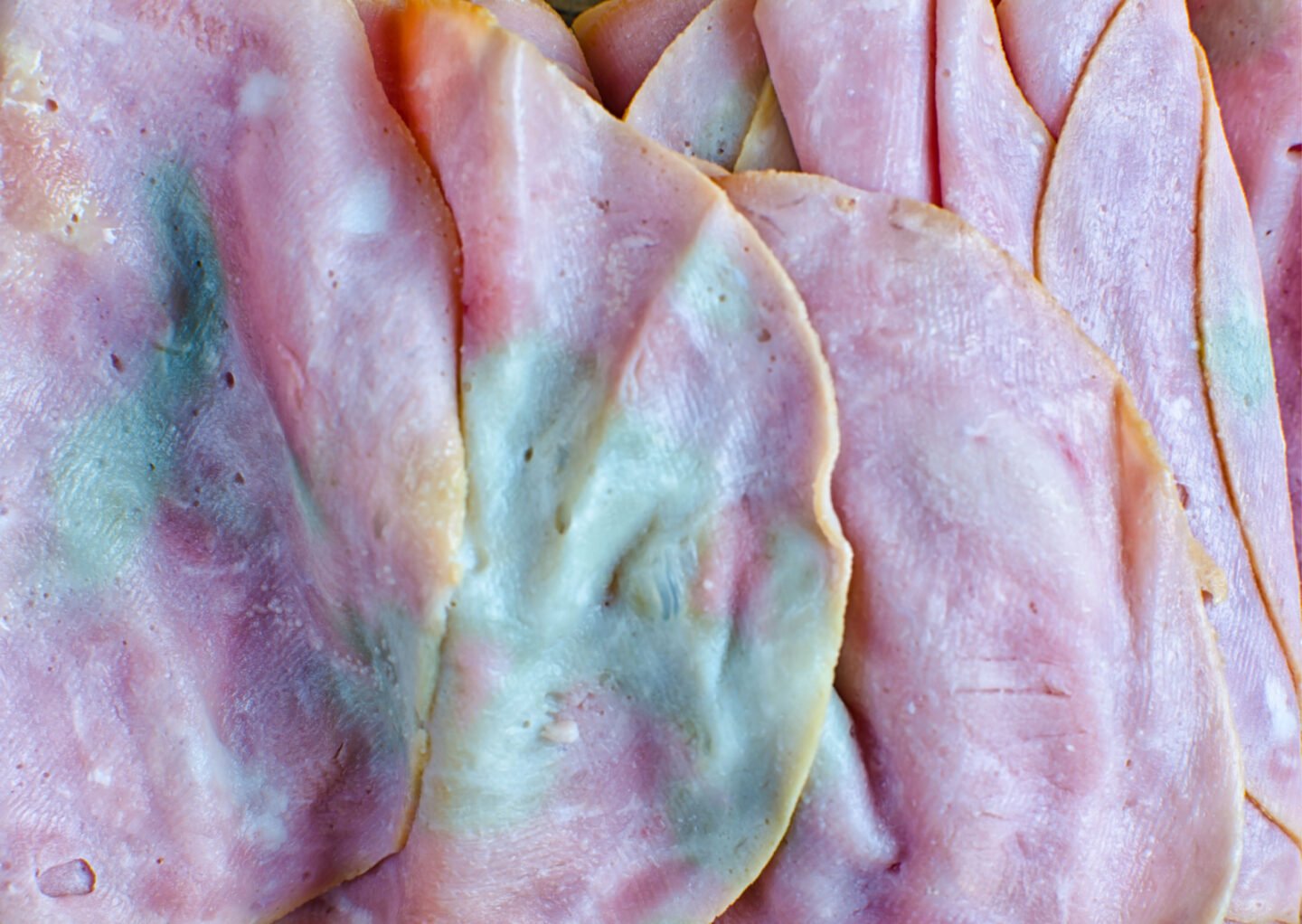If you buy ham frequently, you may have noticed that it can become slimy as it ages. Although ham lasts up to a week in the fridge, you may see slime appearing on the surface of the ham earlier.

Slime on ham means there is bacterial growth that may cause food poisoning. The presence of slime also comes with a foul odor or discoloration, which should tell you to discard the ham. According to the Centers for Disease Control and Prevention, raw food, especially of animal origin, is more likely to cause food poisoning than other foods.
To avoid infection, it’s best to learn everything about food safety when dealing with meat, specifically ham. Read on to discover how to store ham properly, how to tell if it has gone bad, and the consequences of consuming spoiled ham.
Table of Contents
How Is Ham Made?

Before we dive into how ham develops slime on its surface, it’s essential to know how they’re made to help us better understand why they are prone to developing slime on their surface. From lavish holiday gatherings to regular school lunches, ham is a favorite meat product that improves any dish.
Traditionally, ham comes from a pork or hog’s hind leg, but nowadays, there are other types of ham, including beef, lamb, and chicken. Depending on what the process says, ham is either salted or cured dry, brined or cured wet. This process infuses raw meat with flavor enhancers like salt, sugar, phosphates, and other added ingredients.
What Does It Mean When The Ham Has Slime?
Slime on deli ham means there is bacterial growth on the meat. Bacteria love eating flesh, like meat; while they multiply, they cause the meat to rot. Hence, the white slime on the surface. The slimy layer on the surface of any meat product is usually accompanied by a bad smell and some discoloration. This is a sign that the meat has gone bad because bacteria have grown on it.
Although the slime you notice on the surface of the ham could be oil from the fatty layer, it’s unlikely, and it’s safer to assume that the slimy layer is due to bacterial growth, especially when you notice a white slime that’s cloudy. This way, you can prevent any risk of developing food poisoning.
Can You Eat Slimy Ham?

To avoid getting food poisoning or another illness caused by food, you shouldn't eat slimy ham. Bacteria love colonizing meat and meat products. According to the Centers for Disease Control and Prevention, meat, including processed meat, is more likely to cause food poisoning than other foods and products.
It’s important to note that it’s also not safe to cut the slimy layer and still eat the ham, as bacteria colonize the inner parts of any meat product. The best course of action when you encounter a slimy ham is to throw it away.
What Happens If You Eat Slimy Ham?
Eating slimy ham may cause you to develop food poisoning and put your immune system at risk. Food poisoning is a disease that is spread by eating bad food. It causes stomach problems like upset stomach, stomach cramps, nausea, vomiting, diarrhea, and fever.
But the symptoms may continue and get worse, and you may have bloody diarrhea, a high fever, and become dehydrated from vomiting a lot. In this case, you should see your doctor and have yourself tested.
Some of the most common causative agents of this foodborne illness are Staphylococcus aureus, Vibrio, Clostridium, Salmonella, E. coli, Campylobacter, and Listeria. To avoid catching these bacteria, you should not eat any food that shows signs of spoilage, especially slimy meat, spoiled meat, or food that contains mold and other contaminants.
How Long Does Ham Last?

Most types of ham last about 5 to 7 days in the fridge. However, there are different varieties of ham, and we will discuss each in this section.
Fresh Ham or Raw Ham
Fresh, uncooked ham lasts 3 to 5 days in the fridge and up to six months in the freezer. On the other hand, cooked raw ham lasts 3 to 4 days in the refrigerator and 3 to 4 months in the freezer, packed in vacuum-sealed plastic.
Cooked Ham
Store-bought cooked ham lasts up to seven days in the fridge and up to 1 to 2 months in the freezer in a vacuum-sealed bag. This estimation is the same for ham products vacuum-sealed at the plant.
Country Ham
Uncooked country ham lasts up to 2 to 3 months in the fridge, while cooked country ham lasts 5 to 7 days. Country ham usually lasts longer because it is salted and smoked to make it last longer.
Canned Ham
Shelf-stable canned ham lasts up to two years in the pantry, while canned ham that requires refrigeration lasts 7 to 9 months unopened. However, like other cooked hams, an opened and cooked ham lasts only 5 to 7 days.
Lunch Meat Ham
Unopened lunch meat ham lasts until its "best by" date, while opened and cooked lunch meat lasts 5 to 7 days, like other cooked ham.
How to Avoid Slime on Ham

To avoid slime on ham or spoilage, just follow these simple tips:
- Freeze plastic-wrapped ham to extend shelf life.
- Avoid taking the whole batch out when using only a few slices.
- Wrap leftover ham tightly or use a vacuum sealer to avoid bacterial contamination.
- Avoid leaving the ham at room temperature.
How to Know If the Ham Has Gone Bad
Foul Odor
Spoiled meat products, including ham, produce an off-putting smell. This is due to the meat rotting. You should be able to notice this first, then the discoloration, so be sure to inspect the ham once you start seeing a change in smell.
Slime on Surface
Slime on the surface of the ham means that it is contaminated with bacteria, mostly lactic acid bacteria, which break down the meat's fat layer.
Discoloration
You will quickly notice the discoloration, especially when it has reached most parts of the ham. Once you notice greenish or grayish discoloration on the meat, you should throw out the whole batch immediately.
Related Questions
Yes, you can eat pink slime. Contrary to its name, pink slime, or lean finely textured beef, is an additive mixed with ground beef and beef-based meats in making meat products like hot dogs to reduce the overall fat content.
Lunch meat is the general term for cold-cut, cooked meat, sliced meat, deli meat, and cold meat, while ham is the most common type of lunch meat.

Leave a Reply